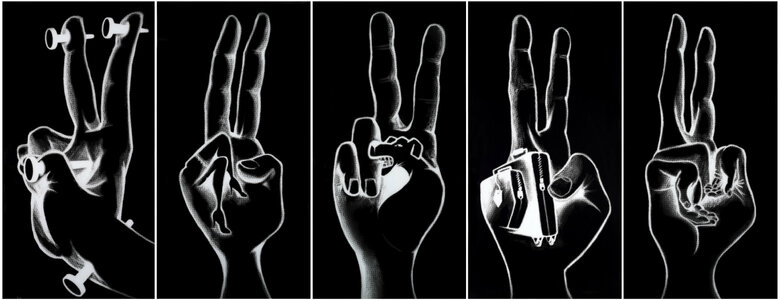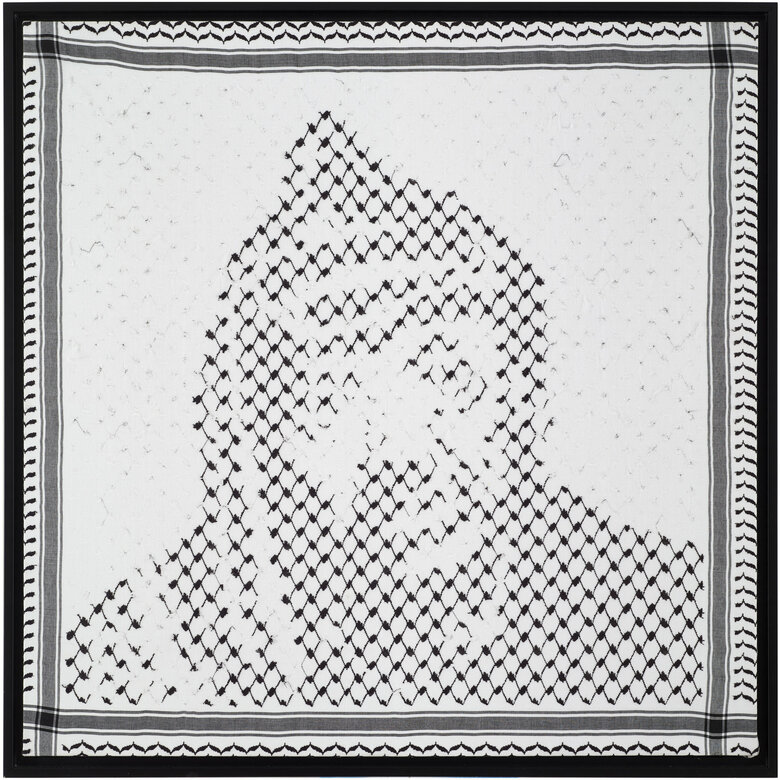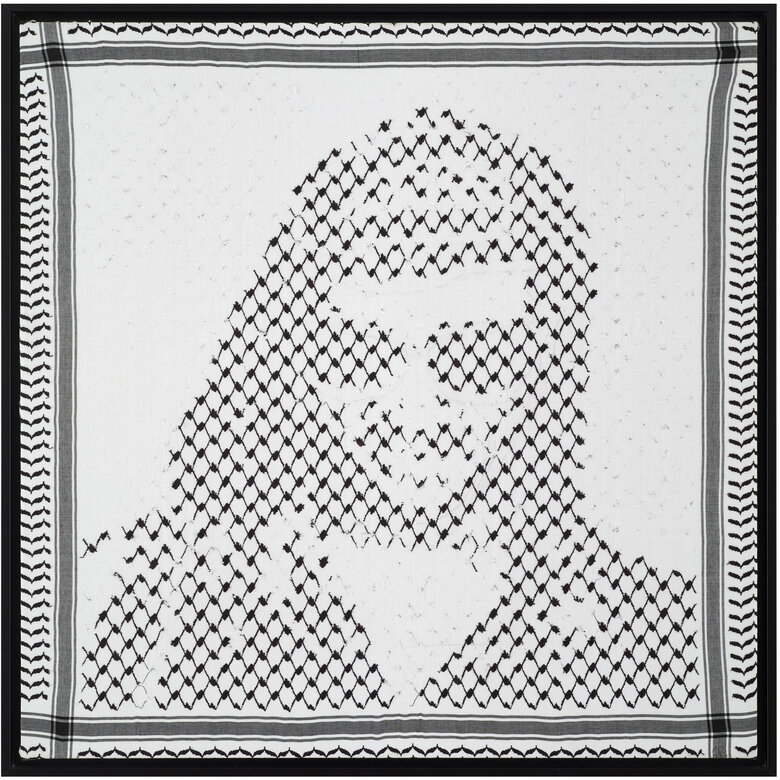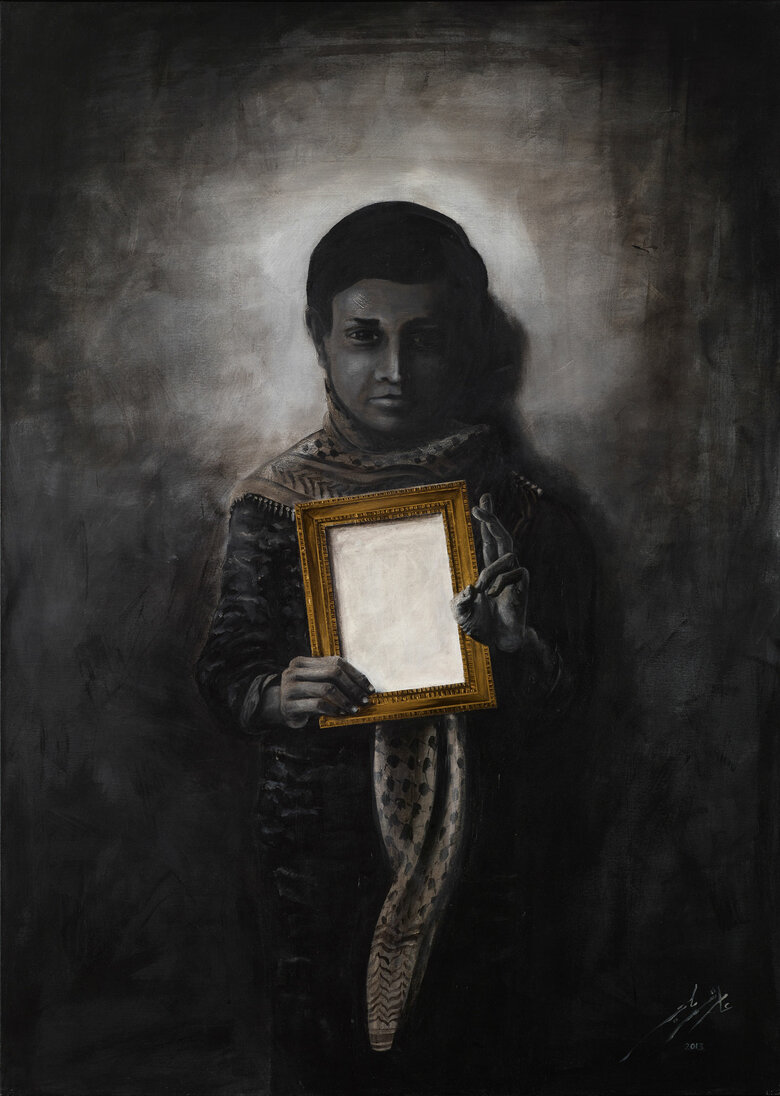Post (Visit Palestine) The Guillotine, 2009, by Amer Shomali reinterprets a famous 1936 poster by Zionist designer Franz Kraus meant to persuade Jews to move to the holy land. The original 1936 version depicted a detailed representation of the Dome of the Rock, surrounded by well-maintained gardens and, behind it, an urban sprawl filled with traditional houses, all under the soft hues of a setting Mediterranean sun with “Visit Palestine” stamped across the lower half. In the aftermath of the 1990 Oslo peace process, the original poster would have a resurgence in popularity, particularly within the Palestinian communities, with copies of it found in official governmental institutions as well as public places such as cafes.
The original 1936 poster has come to signify a form of affirmation for many Palestinians against the lies perpetuated by the Zionist regime: the poster named Palestine, and by extension, Palestinians, as real, which is something that Zionists have denied for decades; it showed not only that Palestine exists, but that it was filled with life and living people, which removes the Zionist ideology that this land was empty of people for them to colonize, or that its some sort of barren land simply waiting for them to cultivate it.
Shomali’s 2009 iteration satirically replaces the wall of
Jerusalem in the original with the looming separation
wall, overtaking the landscape and blotting out any
view of the Old City. At the bottom, he includes the
glib remark, as though addressing the original designer
and simply discussing an aesthetic issue instead of a
monumental barrier that would upend people’s lives and
sever them from their lands and communities: “I agree
that adding the wall is vandalism and a rude intervention.
~ The Designer.” The actual location of the separation
wall is on the opposite side rather than directly in front
of the Dome of the Rock. By deliberately placing the wall
to hide Jerusalem entirely, the work highlights the nature
of oppression and apartheid in this context and how it
transforms the relationship between Palestinians and
their land.
Inscribed "Franz Krausz, Visit Palestine, 1936" in English on the lower right front, and in hebrew on the lower left front



-high-resJPG.jpg)
-high-resJPG.jpg)









